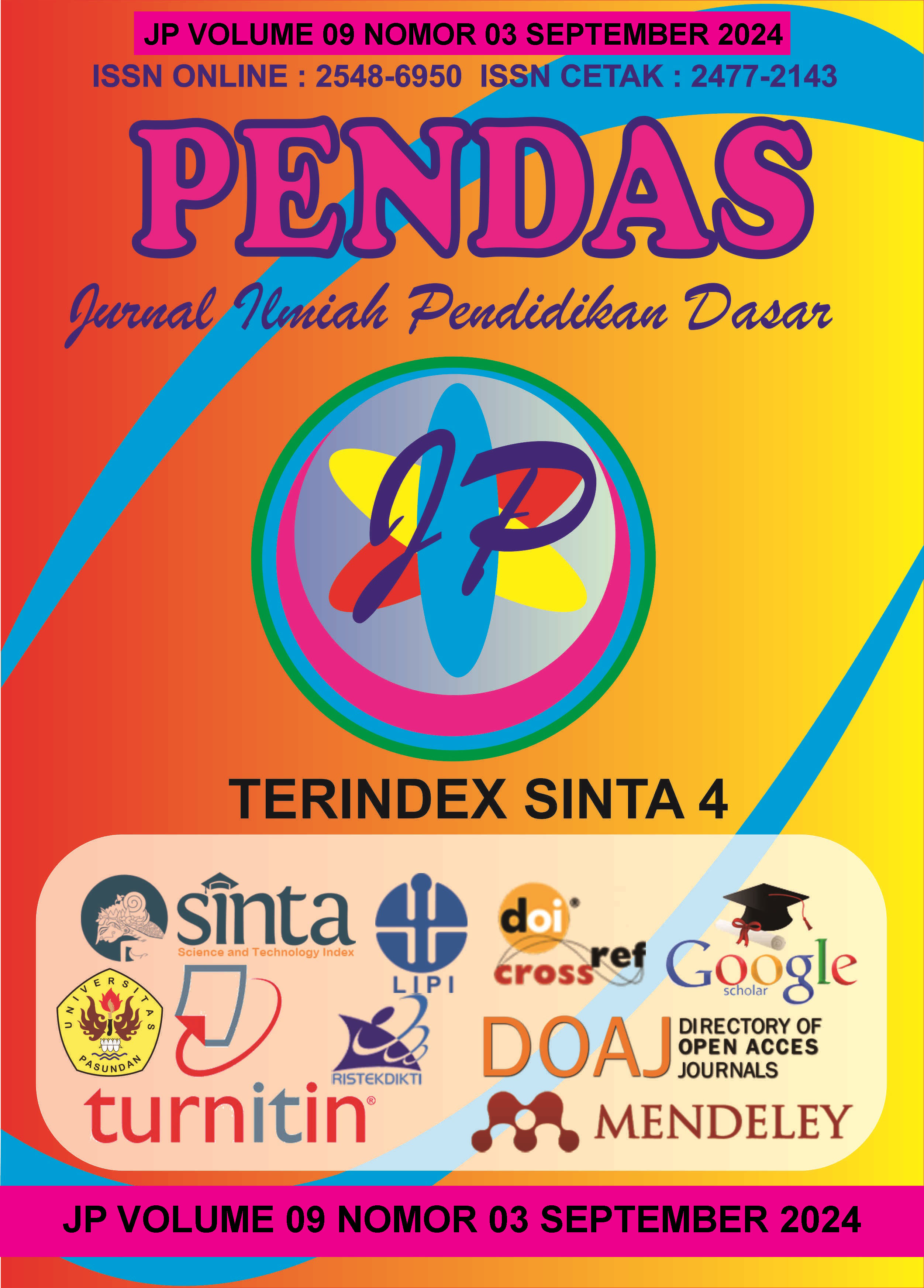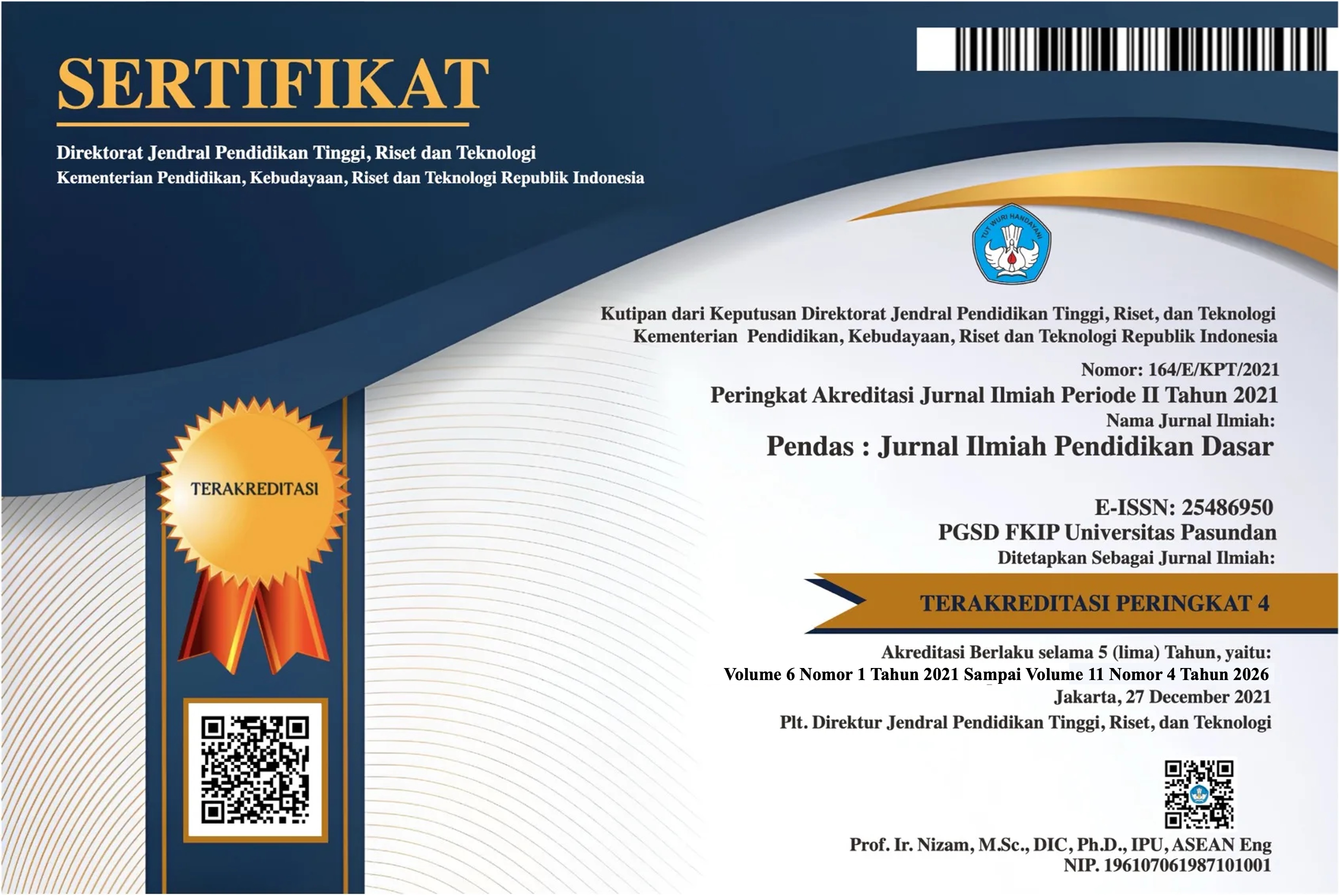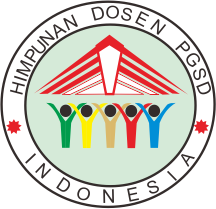ANALISIS PENGGUNAAN MODEL WHOLE LANGUAGE TIPE READING ALOUD TERHADAP KEMAMPUAN MEMBACA PERMULAAN DI KELAS II SDN 94 SINGKAWANG
DOI:
https://doi.org/10.23969/jp.v9i3.16062Keywords:
beginning reading ability, whole language model reading aloud type, elementary educationAbstract
This research aims to describe students' initial reading abilities using the Whole Language Reading Aloud model for class II students at SDN 94 Singkawang and to describe the implementation of the use of the Whole Language Reading Aloud model in Indonesian language learning in class II at SDN 94 Singkawang. The type of research is qualitative with descriptive methods. The subjects and objects in this research were the Indonesian language teacher as the subject, and all class II students at SDN 94 Singkawang, totaling 30 students, as the object. Data collection techniques are test, observation, interview and documentation techniques with data collection tools in the form of initial reading ability test sheets, observation sheets and interview sheets. Data analysis techniques are data reduction, data presentation, and drawing conclusions. The results of the research are: 1) the initial reading ability of class II students at SDN 94 Singkawang using the reading aloud method is in the good category, reaching a percentage of 80%. 2) the implementation of the use of the whole language reading aloud type model in Indonesian language learning in Class IIA SDN 94 Singkawang which is carried out with learning steps and is effective in improving Indonesian language learning activities, especially towards beginning reading abilities. Based on the research results, it was concluded that the use of the reading aloud method on students' initial reading abilities in Class IIA SDN 94 Singkawang was effective in improving Indonesian language learning activities, especially on initial reading abilities.
Downloads
References
Ardini & Idris. (2013). Analisis Penggunaan Model Pembelajaran Whole Language Tipe Reading Aloud Terhadap Kemampuan Membaca Permulaan di Kelas I SDN 9 Tilongkabila Kabupaten Bone Bolango.
Barus. F. et al. (2023). Meningkatkan Kemampuan Membaca Pada Anak Sekolah Dasar Menggunakan Program Mobile Teaching. Jurnal Pendidikan Guru Sekolah Dasar.
Bujangga, H. (2022). Metode Reading Aloud Dalam Membantu Siswa Dengan Kesulitan Belajar Disleksia (Pembelajaran Inovatif Progresif). Genderang Asa: Journal Of Primary Education
Djumali, dkk. (2014). Landasan Pendidikan. Yogyakarta: Gava Media.
Hernawan, A. B. (2013). Pengaruh Partisipasi Kegiatan Organisasi Siswa Intra Sekolah dan Kecerdasan Emosional Terhadap Kreativitas Belajar.
Mukharam,I., Ruswan,A., & Wulan,N. S. (2022). Analisis Keterampilan Membaca Permulaan dengan Metode Reading Aloud pada Siswa Kelas II Sekolah Dasar (Studi Kasus Pada Siswa Kelas II di SDN Purwamekar Kab. Purwakarta Tahun Ajaran 2020/2021). Renjana Pendidikan: Prosiding Seminar Nasional Pendidikan Dasar, 2(1), 1814-1819.
Sukmadinata, N. S (2015). Metode Penelitian Pendidikan. Bandung: PT. Remaja Rosdakarya.
Sukmawaty, N. et al. (2021). Pengaruh Metode Read Aloud terhadap Peningkatan Kemampuan Membaca Anak Usia 5-6 Tahun di TK Aiueo Agus Salim. Jurnal Pendidikan Tambusai
Sevianty. (2023). Pengaruh Pendekatan Whole Language Berbantuan Metode Reading Aloud terhadap Keterampilan Membaca Pemahaman Siswa Kelas V SD IT Raudhaturrahmah Pekanbaru. Skripsi
Zaini, H (2016). Strategi Pembelajaran Aktif. Insan Madani
Downloads
Published
Issue
Section
License
Copyright (c) 2024 Pendas : Jurnal Ilmiah Pendidikan Dasar

This work is licensed under a Creative Commons Attribution 4.0 International License.



















